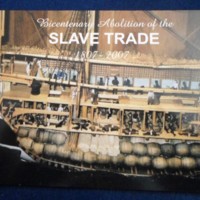
Response of Jacqueline and Sonia Brooks
As descendants of enslaved Africans, Jacqueline and Sonia Brooks expressed their own independent responses to the bicentenary. Jacqueline designed a limited edition postcard to display the horrors of a slave ship. Sonia wrote the poem Amazing Trade, which was performed during the National Maritime Museum's programme for Slavery Remembrance Day.
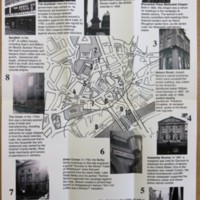
The Roots Initiative
identity on tyne is a group for writers and artists of colour in North-East England. The Roots Initiative was their response to the bicentenary, in partnership with the Literary and Philosophical Society. The writer Sheree Mack examined the region's involvement in the slave trade and the abolition movement through historical documents, creative writing and poetry. A heritage walk around Newcastle highlighted the events, individuals and places involved in the slave trade, slavery and the abolition movement in the North-East.
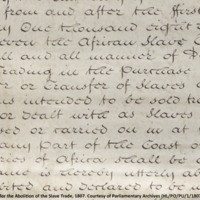
West Wales and the Slave Trade
The Friends of Narberth Museum presented an exhibition which examined the people, places and events in West Wales with links to the transatlantic slave trade and the campaign for abolition. Children from local schools worked with copies of documents and diaries relevant to the Narberth area, and designed their own commemorative plates. Events included a talk on the Underground Railroad and quilting, a children’s writing workshop, and a Deep South supper with music.
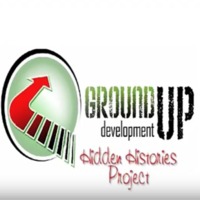
Hidden Histories
This project worked with young people from Lambeth, South London, to examine the history of West Africa, its peoples and their rich heritage, culture and traditions, as well as the impact of slavery and the African diaspora. Using film production, creative workshops, and visits to heritage sites, the emphasis was on the positive impact of African history and its effect on the aspirations and self-esteem of young people.
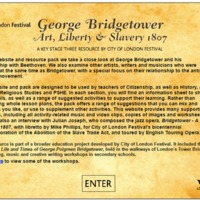
George Bridgetower: Art, Liberty and Slavery 1807
In this website and Key Stage 3 Resource Pack, the City of London Festival examined the work of the Afro-European violinist George Bridgetower (1778-1860) and, in particular, his relationship with the composer Ludwig van Beethoven. The resource also explored the role of other artists, writers and musicians who were active at the same time as Bridgetower, with a special focus on their relationships to the anti-slavery movement. The website provided music, video clips and worksheets, alongside an interview with Julian Joseph, composer of the jazz opera Bridgetower - A Fable of 1807, toured by English Touring Opera. The resource was part of a broader education project developed by City of London Festival, which included the exhibition, 1807: The Life and Times of George Polgreen Bridgetower, held in the walkways of London's Tower Bridge. The education project also included storytelling, music and creative writing workshops in secondary schools.
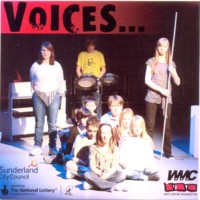
Voices...
A collaborative project between Arts Centre Washington's Youth Theatre and Washington Music Collective, providing development of live music activities for young people within Washington and the surrounding areas. The project involved improvisation, creative writing, music and drama workshops for young people during school holidays, and culminated in a thirty minute play around the themes of slavery. A DVD was produced featuring musical shorts and video diaries of the young actors' experiences. One theme covered was the limbo dance, originating in Trinidad and Tobago, and with symbolic links to enslaved people entering the galleys of a slave ship.
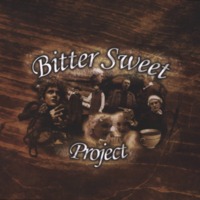
Bitter Sweet Project
Campaign! Make an Impact was a British Library developed programme that used history to inspire young people into active citizenship. The Bitter Sweet Project involved students from Easingwold School engaging with collections from the British Library, Hull Museums Service and Harewood House. Year 9 students studied the 1807 campaign to abolish the transatlantic slave trade and then created a graphic novel about Harewood House’s links to the sugar trade.
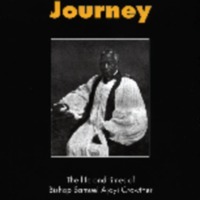
Crowther's Journey: The life and times of Bishop Samuel Ajayi Crowther
Southwark Pensioners Centre Black History Group led a project to explore the life of Bishop Samuel Ajayi Crowther. Born in Yorubaland, Nigeria, kidnapped and sold into slavery, Crowther became the Anglican church's first African-born bishop and an influential missionary in West Africa. The Crowther's Journey project involved weekly research and discussion sessions and visits to places of significance, such as the church of St Mary in Islington, where Crowther was ordained. This booklet focuses on the responses and reflections of members of the group on Crowther, his life and his legacy.
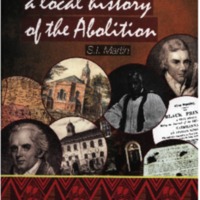
Lambeth and the Abolition
The Lambeth and the Abolition programme included debates, historic trails, a video conferencing discussion between people in Brixton, Ghana and Jamaica, Caribbean family history classes, creative writing workshops, and a dedicated series of events within Black History Month. ‘The Runaways’, an original drama about a runaway slave boy and a kitchen maid in London in 1700, was performed in Lambeth primary schools, accompanied by a workshop. The project researched the local historical links to abolition, and famously the activities of the Clapham Sect (William Wilberforce and his associates) who attended Holy Trinity Church in Clapham. A booklet by historian S. I. Martin sets the history of abolition in the larger context, through his study of the African Academy at Clapham, and his mapping of some of the links between Lambeth, Jamaica and West Africa at the beginning of the 19th century.
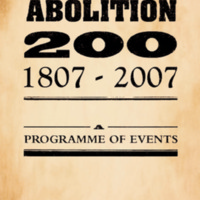
Abolition 200
A programme of events from Wolverhampton City Council to mark the bicentenary, which included a public debate about whether the British government should apologise for the slave trade, services of remembrance and film screenings. Other highlights included stories from Wolverhampton City Archives about the city's role in sustaining the slave trade, and abolishing it, and a discussion and writing workshop with the black writer Fred D'Aguiar and members of Wolverhampton's Black Readers and Writers group. 'Our Ancestors, Our Heritage, Our Stories' was a showcase event highlighting the work of the African Caribbean Community Panel.
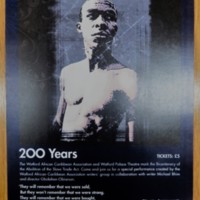
200 Years
The Watford African Caribbean Association and Watford Palace Theatre marked the bicentenary with a special performance created by the Watford African Caribbean Association writers' group in collaboration with writer Michael Bhim and director Gbolahan Obisesan. The three month research project led to the production of prose, drama and monologues covering all aspects of the slave trade.
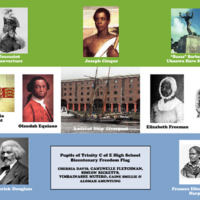
Bicentenary Freedom Flag
The Bicentenary Freedom Flag was displayed alongside an exhibition about Wartime Black History at Manchester Town Hall. The project was a collaboration between staff from Manchester City Council Corporate Services Black Staff Group and pupils of Trinity Church of England School in Manchester. The flag recognised the work, struggles and sacrifices of those who brought the slave trade to an end, and featured images of prominent individuals on the background of the Sierra Leone flag. Those featured on the flag included Toussaint L'Ouverture (General of the Haitian Uprising), the abolitionist Olaudah Equiano, the anti-slavery orator Frederick Douglass, the statue in Barbados of 'Bussa', the unknown slave, guide of the Underground Railroad Harriet Tubman, and Joseph Cinque, leader of the Amistad slave ship revolt. The accompanying exhibition included pupils' articles and creative writing. It also examined the history and role of the West India Regiments, British colonial infantry regiments largely recruited amongst freed slaves from North America and slaves purchased in the West Indies.
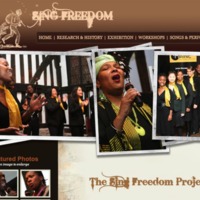
Sing Freedom
The Sing Freedom project was based on the Spirituals sung by African peoples as a response to being enslaved. The generally Christian songs often contained instructions about escape and resistance. The project was a collaboration between Kainé Management Group, Leicester African Caribbean Arts Forum, Leicester City Council Arts & Museum Service and Library Service. It included research into the songs, a touring exhibition, and performances. A series of song writing workshops for young people in partnership with BBC Radio Leicester aimed to give each participant an understanding of the effects of slavery and perceptions they have on present day freedom. At Leicester Guildhall Kainé Gospel Choir and friends came together for an evening celebrating the Spirituals, where songs such as The Gospel Train, Wade in the Water and Swing Low Sweet Chariot were sung.
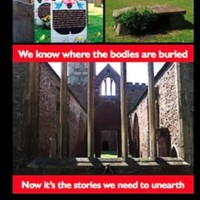
Diverse Stories
The Diverse Stories project began in 2007 with participants from Malcolm X Elders, an Afro Caribbean elders and community group in Bristol, taking part in a creative writing project to mark the bicentenary. This was jointly supported by Show of Strength Theatre Company, Our Stories Make Waves and English Heritage. Participants visited the ruined Temple Church in Bristol and explored its links with the slave trade and abolition movement. Their responses included a range of dramatic monologues covering themes such as slavery, racism, trade, childhood memories of Jamaica and migration from the Caribbean. These were read at a performance by a professional actor. In 2008 the project was given a permanent record by a selection of the stories being recorded on audio CD.
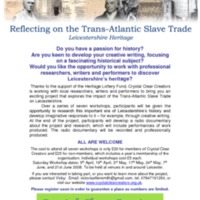
Reflecting on the Trans-Atlantic Slave Trade
Crystal Clear Creators is a not-for-profit arts organisation based in the East Midlands. Reflecting on the Trans-Atlantic Slave Trade enabled a series of community creative writing workshops in Leicester exploring themes of the slave trade. The workshops involved talks from experts in the field, a tour of relevant places of interest, and research at the Leicester, Leicestershire and Rutland Records Office. Those involved then wrote, produced, recorded and broadcast radio dramas on the subject, and held a day of performances for the public. The project was developed with Leicester's Arts forum LACAF and Mainstream Partnership. A follow-on project in 2009-10, Reflections: The Trans-Atlantic Slave-Trade, was a course for young people about the transatlantic slave trade, which included researching and writing about the subject. The project culminated in a day of performances and an exhibition at New Walk Museum.
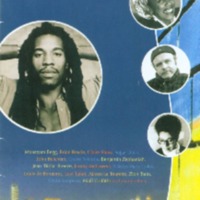
WOW2007
In 2007 Liverpool's annual Writing on the Wall arts festival explored the legacy of slavery through words, music, lyrics, song, dance and discussion. Authors, campaigners and social commentators explored the themes of the bicentenary and Liverpool's 800th birthday. The festival aimed to celebrate diversity and promote inter-cultural tolerance. Speakers included one of the nine Britons detained in Guantanamo, Cuba. Among the performers was dub poet Benjamin Zephaniah joined by Jean 'Binta' Breeze and Levi Tafari, and featuring the MDI African Dancers for an 'extravaganza of rhythm and rhyme' at the Royal Philharmonic Hall. Liverpool Young Writers was launched by Writing on the Wall in 2007. Members have recently performed at Slavery Remembrance Day and the International Slavery Museum.
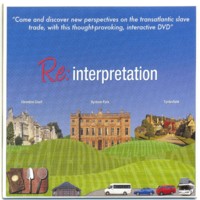
Re:interpretation
Re:interpretation was a participatory media project carried out by Firstborn Creatives in partnership with the National Trust. The project explored transatlantic slavery and its connection with three National Trust properties in South West England: Clevedon Court, Dyrham Park and Tyntesfield. It focused on the feelings and opinions of invited community groups towards those histories, who produced a range of creative responses and commentaries to their findings and also their own personal emotional responses. The project produced a multi-layered interactive exhibit, available on DVD.
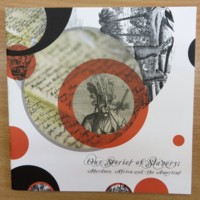
Our Stories of Slavery: Aberdeen, Africa and the Americas
The Our Stories of Slavery events programme ran from May to October 2007, co-ordinated by the Arts Development team at Aberdeen City Council. The project examined all aspects of Aberdeen's links with slavery and the transatlantic slave trade, including the role of Aberdonian landowners as slave owners, as well as the impact of Aberdonians as abolitionists, such as the roles played by James Beattie and James Ramsay.
One focus of the project was on the role of Aberdonian magistrates in kidnapping children from the City and Shire and selling them into indentured service to plantation owners during the 18th century. Peter Williamson, known as 'Indian Peter', was one of up to 700 kidnapped in Aberdeen between 1735 and 1750. The project used his story, with archives at the University of Aberdeen, in a range of activities including storytelling, re-enactments, film making, workshops, creative writing and craft workshops. Kidnapped was a re-enactment set in and around The Tolbooth (Aberdeen's Museum of Civic History). In collaboration with artist Chris Biddlecombe, community knitting circles created 'Cast-offs', exhibited at Aberdeen's Kirk of St Nicholas, whereby an installation of 600 knitted jumpers represented the abducted children.
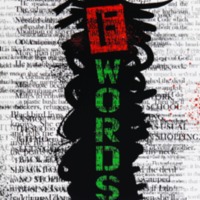
FWords
FWords was a creative response of eight Yorkshire writers and artists to the commemoration of the Abolition Act, in a project led by Peepal Tree Press in Leeds. Focusing on the many variations of the theme of 'Freedom', Fwords was created to raise the profile of Yorkshire's rich heritage of talented artists, descendants of those who migrated, forcefully and otherwise from Africa and beyond. The work of six writers was illustrated with work from two visual artists, and with a foreword from Caryl Phillips. The project was supported by printed materials, broadcasts, digital and dedicated web pages.
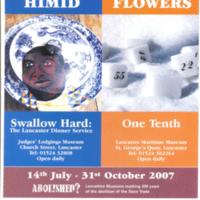
Abolished? Lancashire Museums marking 200 years of the abolition of the Slave Trade
Lancaster was the UK's fourth largest slaving port at the height of the transatlantic slave trade in the 18th century. Lancashire Museums worked with a range of partners to raise awareness of this largely hidden history - first from 2002 through STAMP (the Slave Trade Arts Memorial Project), and in 2007 through Abolished? This bicentenary project consisted of exhibitions, creative writing, radio broadcasts, and schools projects, one of which produced a Slavery Town Trail that explored some of the buildings made possible by the wealth the slave trade brought to Lancaster. At the heart of the project were commissioned installations and interventions by artists Lubaina Himid ('Swallow Hard: The Lancaster Dinner Service' at the Judge's Lodgings) and Sue Flowers ('One Tenth' at Lancaster Maritime Museum). Both were accompanied by outreach programmes and workshops with local schools. A touring exhibition was produced in partnership with Anti-Slavery International and Lancashire County Council Youth and Community, which looked at transatlantic slavery and modern day slavery. The exhibition toured throughout Lancashire.